#Mistflow Draws
Explore tagged Tumblr posts
Text
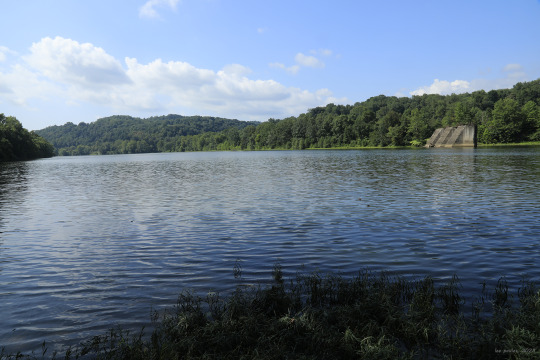
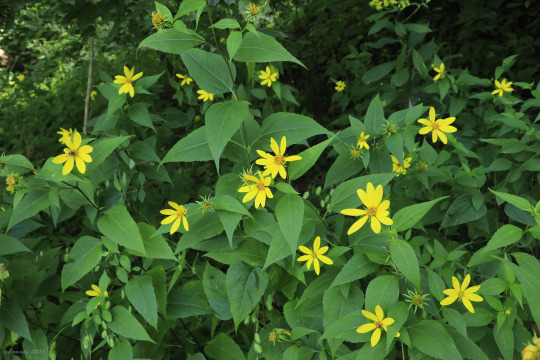
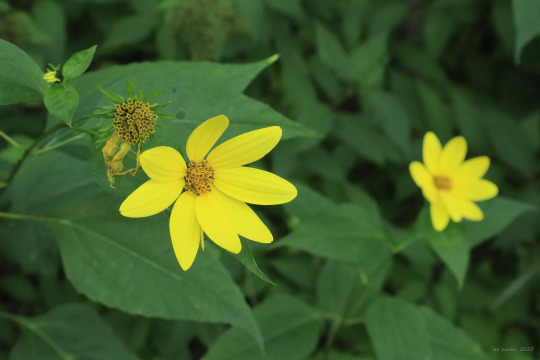
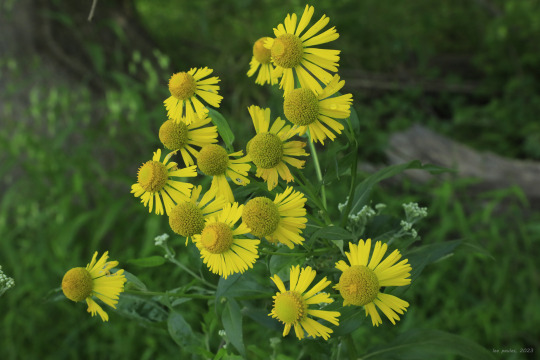
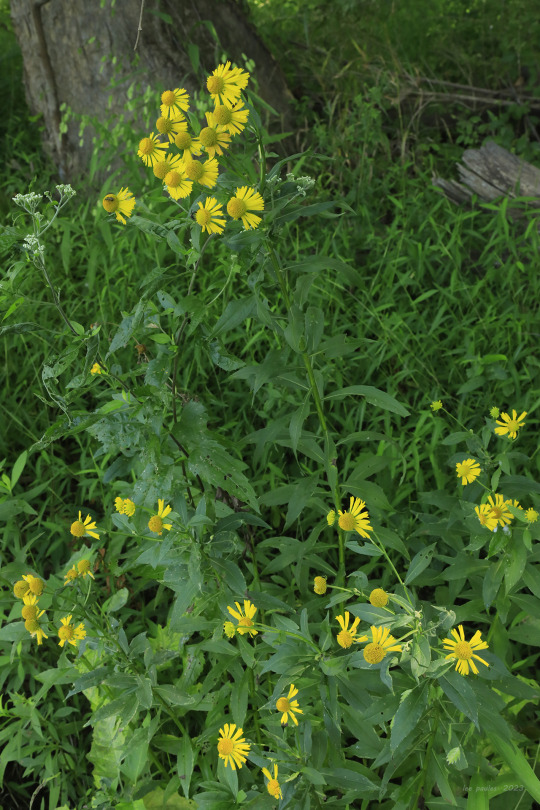

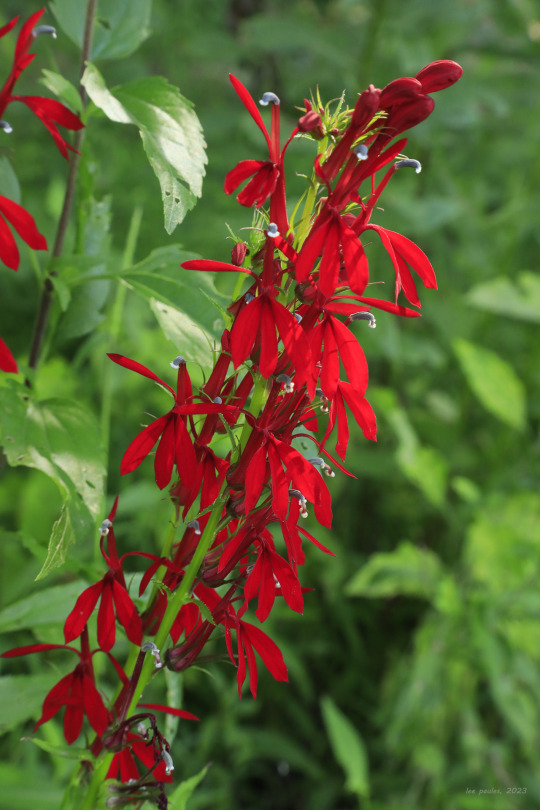

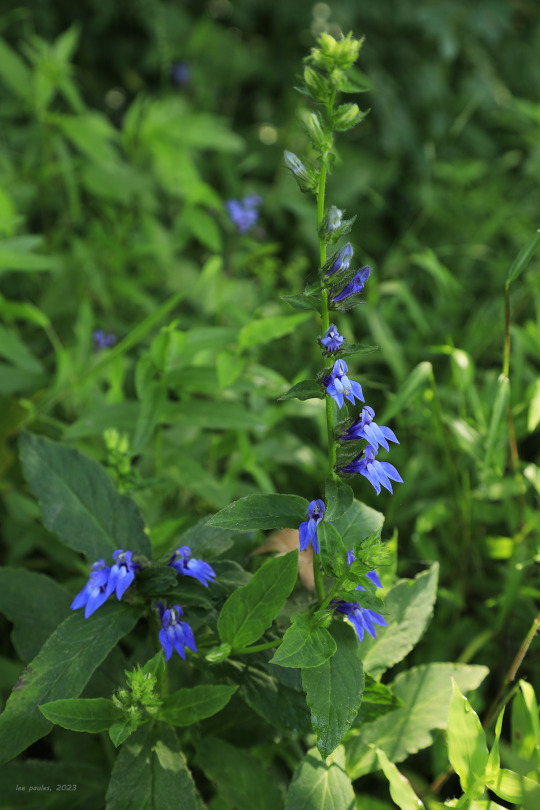

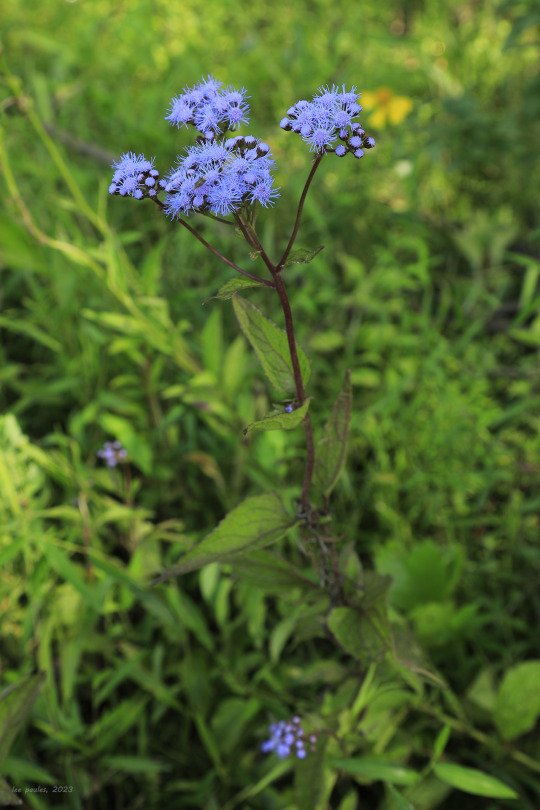
A selection of late summer wildflowers growing in the riparian zone along the Monongahela River at the Friendship Hill National Historic Site.
From top: Paleleaf woodland sunflower (Helianthus strumosus), also known as pale-leaved sunflower, distinguished by long leaf petioles and a pale leaf underside; common sneezeweed (Helenium autumnale), a water-loving aster whose dried leaves were once used to make snuff; cardinal flower (Lobelia cardinalis), whose scarlet, five-lobed flowers draw hummingbirds as pollinators; the closely-related great blue lobelia (Lobelia siphilitica), which early settlers once used as a treatment for syphilis (wishful thinking); and blue mistflower (Conoclinium coelestinum), or wild ageratum, a native aster that has become popular as a garden plant.
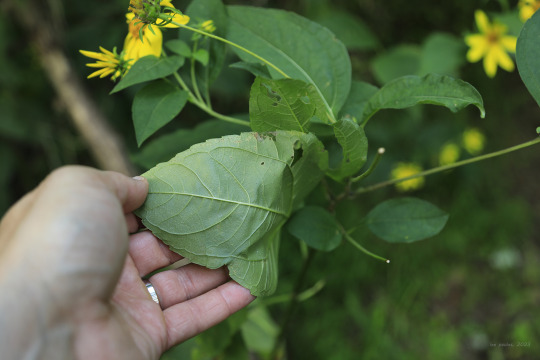
As a note, about a dozen sunflowers call NC-WV - SW PA home and they readily hybridize, often complicating identification. Pale-leaved sunflower has a tall, branching structure up to 7 feet in height and dense clusters of large flowers. In addition to long petioles and a pale leaf underside, this sunflower has a smooth stem with a whitish bloom to it. It's a very beautiful mid-to-late summer aster and one of my favorite wildflowers of Central Appalachia.
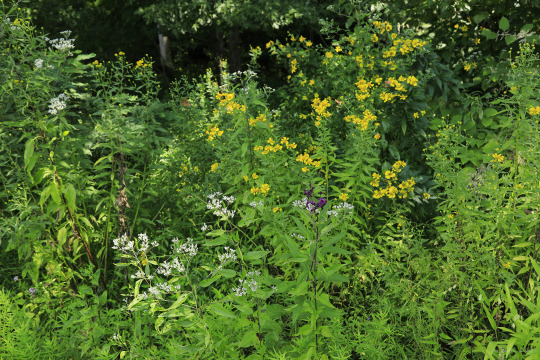
#appalachia#vandalia#wildflowers#flora#summer#pennsylvania#monongahela river#friendship hill national historic site#pale-leaved sunflower#paleleaf woodland sunflower#paleleaf sunflower#common sneezeweed#cardinal flower#great blue lobelia#blue mistflower#mistflower#wild argeratum#riparian
136 notes
·
View notes
Note
fav plants? local to your area & not!
Oh gosh theres so many for all kinda reasons!
I have always loved lavender just in general, i think it smells and tastes amazing and is a great plant for getting into herbalism and spirit work since its so approachable yet strong.
As for local ones, I love Romerillo (Bidens alba) aka beggarstick or shepherd’s nettle! Its a wild edible that grows everywhere here. Its great for sweet baths and drawing in luck and prosperity, and especially opportunities. You can also mash it up and use it on but bites and scrapes!!

Next would be Abre Camino or Florida Thoroughwort aka blue mistflower and wild ageratum. This family of plants includes a few species and all are great for baths and spells regarding clearing blockages and aligning yourself with your destiny. They are also just beautiful.
As for trees I would say Cypress and Pine are my favs. Cypress can live to be over 1000 years old and were used by my ancestors to make Canoes that could travel hundreds of miles carrying literal tons, and has ties to burials. Pine is an ancestral ally to me, my family is from Isla de Pino in Cuba and have always lived among the Pinelands and swamps even here in FL.
Thanks for the ask!!
0 notes
Text

NEW FROM FINISHING LINE PRESS: An Orchid’s Guide to Life by Kathryn Jones
On SALE now! Pre-order Price Guarantee: https://www.finishinglinepress.com/product/an-orchids-guide-to-life-by-kathryn-jones/
#Orchids, the world’s largest and most diverse family of #flowering #plants, grow in deserts, in tropical forests, and on mountaintops. They cling to whatever they can – rocks, trees, crevices – and draw sustenance from air and water, letting their roots dangle. As the daughter of an orchid curator, Kathryn Jones closely observed these fascinating plants and found guidance for her own life, navigating grief and loss, adapting to change, and seeking solace in the natural world. An Orchid’s Guide to Life is a rich tapestry of #poems that, like the flower spike of a Phalaenopsis orchid, reaches for light and with resilience and desire, blooms.
Kathryn Jones is a poet, journalist, and essayist who grew up around orchids. For many years her father was the curator of orchids at the South Texas Botanical Gardens & Nature Center in Corpus Christi. Observing them at the Samuel Jones Orchid Conservatory named for her father and cultivating orchids herself gave Jones insights into a mysterious and exotic plant that transcends outer beauty and reveals truths about the inner human world.
PRAISE FOR An Orchid’s Guide to Life by Kathryn Jones
The poems in An Orchid’s Guide to Life offer us the sensuous colors, scents, and textures of the natural landscape in which Kathryn Jones spent her childhood and which she now carries within her as memory. The poet wrestles with the great grief of being wholly orphaned by loss, as she pays tribute to her mother and father, her childhood home, and the girl she once was. Like Amichai, she finds wild peace in nature, among purpling mistflowers and Monarchs, and she contemplates the many-chambered heart of the hard-shelled nautilus—as if to ask how we survive in our deeply bifurcated world. Perhaps the flower spikes of the Phalaenopsis orchid appearing in the title poem—with their beckoning beauty and hard-edged shield—suggest the paradox all life must navigate.
–Robin Davidson, 2015–2017 Houston Poet Laureate & author of Mrs. Schmetterling
A plant can be our teacher as revealed in Kathryn Jones’s lush and deeply personal collection. Guided by her father’s passion—orchids whose beauty springs from gangly roots and tough resilience—the poet confronts grief and loss, recognizing her own solace within the natural world. She asks the orchids after his death: “How will I care for you?” With a realist’s eye and a romantic’s heart Jones eloquently answers as memory becomes a legacy of caring and keeping—like the bitter-sweet loquat’s “sunshine on the tongue.”
–Shelley Armitage, A Habit of Landscape
This deeply moving collection of poems serves not only as a daughter’s poignant paean to her father, but also as a beautifully rendered series of life lessons about family, about growing old, and about the consolations of nature. As she tells us about orchids, even when held captive in a pot, their roots grow out of their confines in order to dangle free in the air. For Kathryn Jones, the poet is the keeper of memory –the observer and recorder of everyday life in a wild, yet intimate universe that reveals itself, even in the most mundane of situations, in a dazzling order of patterns, colors, swirls, and spirals — in the improbable exotic beauty of an orchid blooming in the unlikeliest of places.
–Carol Flake Chapman, a former journalist, is the author of three books of poetry. Her poems have appeared in numerous journals and anthologies, including The Sixty Four: Best Poets of 2019.
Please share/repost #flpauthor #preorder #AwesomeCoverArt #read #poems #literature #poetry
#poetry#flp authors#preorder#poets on tumblr#american poets#chapbook#chapbooks#finishing line press#small press
1 note
·
View note
Photo

by Mistflow draws
162 notes
·
View notes
Text
Ground Cover Plants
I've been thinking about ground cover plants a lot. I saw some incredible photos of someone's gorgeous garden where they were building greenhouses. It was impeccably maintained, the grass was full and dense and perfectly trimmed and edged and it looked so tidy.
It got me thinking about the type of ground cover plants I would want on my own land, and as much as I love the look of well maintained grass, it seems impractical to maintain in a larger area (like an orchard) and I also think there are less thirsty options that might also have more uses.
Obviously, what plants I use will depend on where I am, but here are some favorite ideas of mine (mostly for central Texas):
Mistflower (this is Gregg’s Mistflower but there are others) is a really good one because its gorgeous and also draws butterflies like crazy for pollinating.

As for grasses, I’ve seen a couple good ones:
Switchgrass (top) and Indiangrass (bottom) are both native prarie grasses that actually get pretty tall, so maybe not best for orchards, but are great for grazing livestock like cattle and sheep.

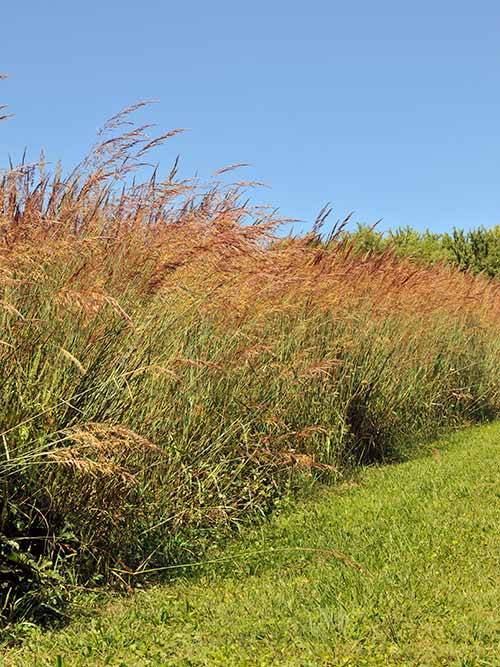
Prairie Dropseed is probably my favorite grass option, just for its thick, vibrant look and low profile. Its also probably the most verdant looking drought-proof grass I’ve ever seen. I love the look of this stuff.
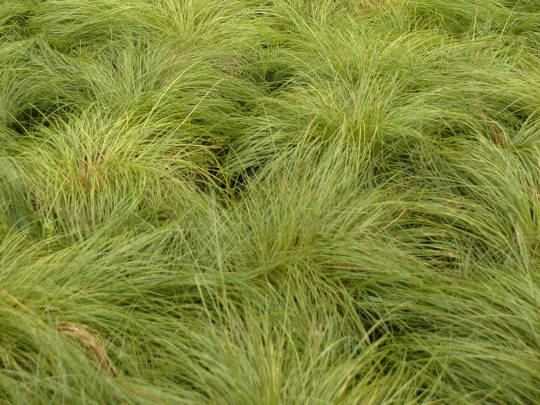
Anyway, those are my thoughts for now. I might come back and add to this post as I find more options that I like.
(If you’re looking for more information, this would be a good place to start)
2 notes
·
View notes
Text
Thus Samson is the sun and his sacred hair its streamers.
Now the secret out, Delilah made Samson ‘sleep upon her knees; and she called for a man, and she caused him to shave off the seven locks of his head; and she began to afflict him, and his strength went from him’ (16:19). As a precautionary measure, she also had him bound with seven withes – the septenate congealing process. Samson must have been a heavy sleeper, for he did not know he was being bound or shaved. Still, matter is a sleepy place; thus it was with Adam, Noah, Pharaoh, and even God, who had to ‘rest’ in it...
[Deceptions and Myths of the Bible]
===
It was already my settled policy then, as it has remained ever since, to make no public protest against anything printed about me, however false and even libellous: as I have before noted, that plan bore defiant fruit in Menckeniana: A Schimpflexikon, published in 1928. There ensued a pleasant correspondence with Van Doren, and he was presently asking me to do some reviews for the Nation. [...] In 1934, more than a year after my name had disappeared from the Nation’s flagstaff, my former connection with it was recalled by the once celebrated Mrs. Elizabeth Dilling, and she listed me in The Red Network, her ‘who’s who and handbook of radicalism for patriots’. The imbecility delighted me... Her counts against me were that I was a member of the National Mooney-Billings Committee and the National Committee on Freedom from Censorship... and had been a member of the John Reed Club and a contributing editor of the Nation... As a matter of fact, I had never been a member of the two committees named... and I certainly never belonged to the John Reed Club, a frankly Communist organization.
[H.L. Mencken]
===
Notice that I have not mentioned bone meal. Even if it were an excellent fertilizer (which it is not), using bone meal in the garden is probably not a good idea. The way I understand it, in olden times bone meal was manufactured from fresh bones that still had some meat scraps attached. Today, bones are steamed to extract fat from the marrow, which is used to manufacture who knows what, soap perhaps. As well, the bones are mechanically scraped clean of meat scraps to be used for other by-products... what is left is nearly pure calcium phosphate, which is just about insoluble. I believe that bone meal is a poor fertilizer, low in nutrients, and attractive to every dog and skunk in the neighborhood. They will come digging for the bones they think are buried and in the process uproot the geophytes.
[Bulbs for Garden Habitats]
===
hairy chervil | Chaerophyllum hirsutum Native to central and southern Europe; boggy meadows, wet ravines, banks of streams and creeks, etc. ... clump-former... foliage is ferny and apple-scented... to 1.2m in height... hardy to zone 6... ‘In the garden, ~ is valued for its fine-textured and delightfully scented foliage and delicate flowers. It provides an excellent complement to many perennials with its ferny leaves and airy flower stalks weaving in between other plants’... one cultivar exists – ‘Roseum’...
green-and-gold, golden knee, golden star | Chrysogonum virginianum Native to the eastern USA... woodlands, forest clearings, edges, slopes of ravines... mat-forming... is said to be both stoloniferous and rhizomatous... fruits are 4-mm-long achenes... readily takes to the garden and is useful as a groundcover... cultivars include ‘Allen Bush’, ‘Pierre’, ‘Springbrook’, and ‘Eco Lacquered Spider’...
hardy ageratum, mistflower, blue bonset | Conoclinium coelestinum (= Eupatorium coelestinum) Native to eastern North America... bogs, stream banks, ravines, wet slopes, etc. ... forms vigorous clumps... no botanical varieties as such; improved selections include ‘Corey’ and ‘Wayside Variety’...
[When Perennials Bloom]
===
Socks Get heavy woolen lumberman's socks, and wear them in and out of season. They are not one whit hotter on the feet than the thinnest you can buy, for the impervious leather of the shoe is really what keeps in the animal heat—the sock has little to do with it. You will find the soft thick wool an excellent cushion for a long tramp; and with proper care to avoid wrinkles, you will never become tender-footed nor chafed. At first it seems ridiculous to draw on such thick and apparently hot socks when the sun peeping over the rim of the desert promises you a scorching day. Nothing but actual experience will convince you; but I am sure that if you will give the matter a fair test, you will come inevitably to my conclusion.
[Stewart Edward White, Camp and Trail]
===
❚Menckeniana: A Schimpflexikon is a collection of articles and quotations denouncing H. L. Mencken, collected and arranged by Mencken himself, with the assistance of Sara Haardt, his bride-to-be. The word “schimpflexikon” is from the German language; it means, roughly, a dictionary of vituperation.
‘Affluenza’ teen told he has to sit in prison for another year
My wife works at a local bookstore and to her and the team Amazon is the devil. However, they recommend ThriftBooks and AbeBooks all the time because they're like the local bookstores of the net. I love it, they have some rare stuff I hadn't been able to find even on Amazon.
0 notes